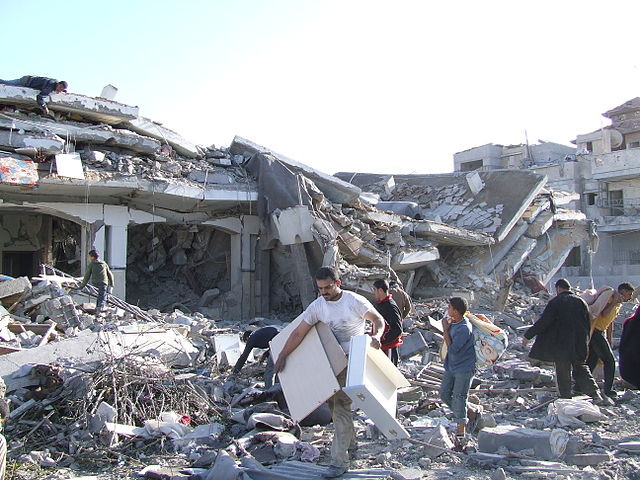An Israeli airstrike leveled a residential building in Beit Lahia, northern Gaza, killing at least 34 people, including numerous women and children, according to the local civil defense agency. The attack, one of the deadliest in recent weeks, highlights the intensifying conflict as Israel targets militant infrastructure amid its broader offensive against Hamas.
The strike, which occurred overnight, left a five-story building reduced to rubble. Civil defense spokesperson Mahmud Bassal said hopes for finding more survivors were fading. "The chances of rescuing more wounded are decreasing because of the continuous shooting and artillery shelling," Bassal told AFP. The attack has left jagged shards of metal and shattered concrete scattered across the scene, with families still reeling from the destruction.
Israel's military stated that it targeted Beit Lahia as part of an operation to prevent Hamas militants from regrouping in northern Gaza. The military said it had made efforts to evacuate civilians from conflict zones, but many residents, fearing uncertainty, have opted to stay. One woman, speaking with BBC News, voiced her desperation: "What have we done to you people? What harm have we caused you? We are staying in our homes. Why are you driving us out?"
In addition to the strike in Beit Lahia, separate attacks on refugee camps in central Gaza reportedly killed 15 people, while five others died in a drone attack on Rafah, according to civil defense reports. The humanitarian crisis in Gaza continues to deepen, with the United Nations estimating that 75,000 people in the northern region remain trapped under siege with dwindling food and water supplies.
The recent escalation follows Hamas's October 7 attack on southern Israel, which resulted in the deaths of approximately 1,200 people and the capture of 251 hostages, according to Israeli authorities. In response, Israel's military campaign has led to more than 43,700 reported deaths in Gaza, with a significant number being civilians, based on figures provided by Gaza's health ministry, which is run by Hamas.
Efforts by Gaza's civil defense to rescue those trapped in Beit Lahia have been stymied by resource shortages and persistent threats. "First responders and civilians are using rudimentary tools to look for survivors under the building's rubble," Bassal explained. Despite a suspension of operations in northern Gaza announced last month due to a lack of supplies and security threats, rescue teams have pressed on.
Residents who survived described harrowing scenes. Abdullah Hammouda recounted how a drone struck a young man on a tuk-tuk transporting victims. His wife, Abeer, still in shock, said, "Had it happened in another country, the whole world would be outraged."
Amid the chaos, displaced residents from Beit Lahia have begun moving southward. AFP journalists observed families carrying bundles of belongings as they walked through rubble-strewn streets, some using bicycles and donkey carts to make their way to Gaza City. Children and adults alike were covered in dust, a stark testament to the destruction they are fleeing.
The crisis has prompted urgent international appeals for a ceasefire and humanitarian intervention. Jordan and Qatar have called for immediate measures to alleviate what they described as an "unprecedented humanitarian disaster" in Gaza. Josep Borrell, the European Union's foreign policy chief, reflecting on the toll, said, "It's about 44,000 people killed in Gaza, the whole area is being destroyed, and 70 percent of the people being killed are women or children."






